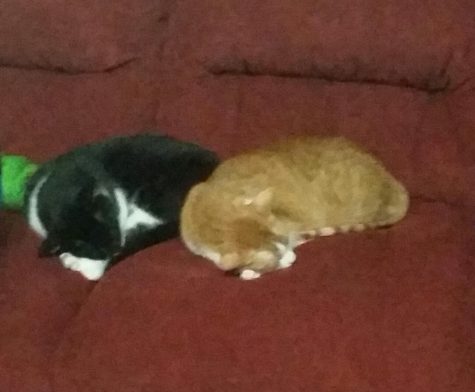The ‘Great American Eclipse’ is almost here
August 21, 2017
As any astronomer can tell you, today will feature one of National Geographic’s top seven astronomical phenomena of 2017: a total solar eclipse.
So what is a solar eclipse? One occurs when the orbiting moon passes directly between the earth and the sun as shown here, casting a shadow across the earth’s surface. During this time, it will trace a thin path across the continent called the path of totality. Those in this small area will experience a total solar eclipse, where the moon completely blocks out the sun.
It is an exceptionally rare event to have the moon’s shadow pass across North America. The last such event occurred almost four decades ago, in 1979, when a brief solar eclipse cut across the northwestern corner of the continent.
The occurrence of a total solar eclipse in the United States has astronomers in a buzz, as the long-anticipated event draws ever near. None are more excited are the so-called “eclipse chasers.” These are self-proclaimed hobbyists ranging from amateur professional observational astronomers (basically the guys who look through telescopes a lot), along with a few serious scientists who study the effects of solar eclipses and the corona of the sun.
Among these avid eclipse fans is a man named David Baron. He recently gave a TED talk at the TEDx Mile High event in July to highlight the beauty of such an event as the Aug. 21st eclipse. He said that a total solar eclipse is “utterly breathtaking” and “unlike anything you’ve ever seen.” He stressed that “as interesting as a partial eclipse is, a much rarer total solar eclipse is entirely different.”
Baron’s message throughout the speech was clear from the start: “Before you die, you owe it to yourself to see a total solar eclipse.” If you want to watch more of Baron’s TED Talk on the upcoming eclipse, you can find his full speech here.
People like Baron spend their lives waiting for the next total solar eclipse and often travel all around the world in search of one.
Luckily for us though, the latest solar eclipse has landed right on our doorstep, albeit only a partial one. Below we will examine some of the things you need to know in order to see either a partial or total solar eclipse. The eclipse will make landfall in the northwestern corner of Oregon, starting at 9:06 a.m. Eastern Daylight time (8:06 CDT), and will pass through 14 states before exiting the stage in South Carolina, almost exactly seven hours later.
While our school does not lie within the path of totality for this eclipse, we will be able to see about 85 percent of the sun blocked by the path of the moon. If a partial solar eclipse isn’t enough to satisfy, here are some resources to help you find a nearby place to view the total eclipse.
Solar eclipses are multi-step events that can have many separate parts. Depending on where you are in relation to the path of totality (inside or outside it and how far from it) there are between two and four distinct phases of a solar eclipse marked primarily by five key events:
The first of these is called First contact, and it begins when the front edge of the moon first begins to cover a little sliver of the sun. This phase will take about an hour and fifteen minutes as the moon slowly inches its way across the sun.
The second is reserved for those in the path of totality, the aptly named “second contact.” This happens when the front edge of the moon reaches the point where it completely blocks out the sun. This is the beginning of the phase known as totality.
Totality is what people travel to see. This complete covering of the sun exposes the sun’s corona, replacing the sun with a fiery ring of light. It is just before this event that one can observe Baily’s Beads), the diamond ring, or (if you’re lucky) shadow bands. This phase can last between one and seven minutes depending on the eclipse. This time around, it will only last about two and a half minutes.
The fourth event is called Third Contact. Because the moon appears slightly larger in the sky than the sun, the trailing edge of the moon only begins cross the sun a couple minutes after the leading edge completes its crossing. This event marks the end of totality, because the crossing of the trailing edge exposes the sun. As before, this will be a process that takes around an hour and fifteen minutes.
The final event is called, appropriately, fourth contact. This marks the end of the solar eclipse. It is the point when the moon departs from the sun and leaves it fully uncovered.
So there it is: almost three hours start to finish.
If you want to view an eclipse, you can just go drive to one and look up – if you don’t mind scorching your retinas. It is recommended, however, that eye protection (sometimes just called “eclipse glasses”) should be worn during the first two and last two events. While the sun is exposed, it can still blast you with harmful UV radiation even when mostly blocked by the moon.
If you are lucky enough to be in the path of totality, when the moon is fully covering the sun it is safe to remove any protective glasses.
Whether you are a professional astronomer, or just someone who likes seeing cool stuff, mark the date and find a place along the path of totality if you want to experience this once-in-a-lifetime event.

